Table of Contents
Interested in ancient mysteries and striking body art? Then you're in the right place! Egyptian tattoo designs are surging in popularity, blending historical significance with eye-catching aesthetics. From powerful gods and goddesses to intricate hieroglyphs and iconic symbols like the Eye of Horus, these designs offer a unique way to express yourself and connect with a rich cultural heritage.
Ancient Egypt Tattoo Designs: A Timeless Trend
Ancient Egypt Tattoo Designs: A Timeless Trend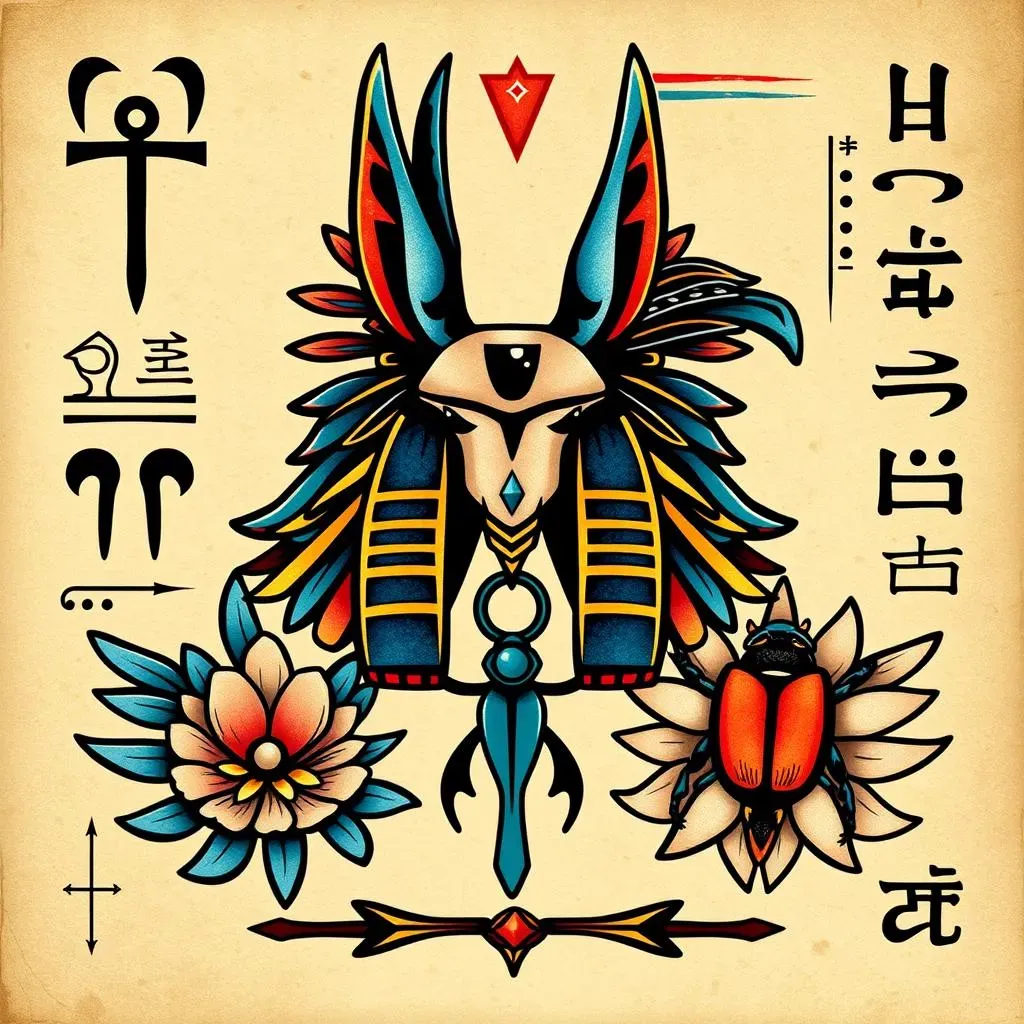
The Enduring Appeal of Ancient Egypt
So, you're diving into Ancient Egypt tattoo designs? Awesome choice! I've always been fascinated by how this culture continues to captivate us, even thousands of years later. From the majestic pyramids to the intriguing mythology, Ancient Egypt offers a wealth of inspiration for body art. What makes these tattoos so timeless is their ability to blend artistry with profound meaning. They're not just pretty pictures; they're symbols of power, protection, and the afterlife.
Think about it, the Egyptians were incredibly advanced for their time. Their art, architecture, and religious beliefs reflect a deep understanding of the world around them. When you choose an Egyptian tattoo, you're tapping into that ancient wisdom and connecting with a civilization that valued beauty, knowledge, and spirituality.
Why Egyptian Tattoos Resonate Today
Why are Egyptian tattoos still so popular today? I think it's because they offer a sense of mystery and intrigue that you don't find in other tattoo styles. These designs often tell a story, whether it's about a powerful pharaoh, a protective deity, or the journey of the soul after death. People are drawn to that narrative aspect. They want tattoos that reflect their own beliefs, values, and experiences, and Egyptian symbols provide a powerful way to do that.
Plus, let's be honest, they look fantastic! The bold lines, intricate details, and vibrant colors of Egyptian art translate beautifully into tattoo form. Whether you prefer a small, subtle hieroglyph or a large, elaborate back piece, there's an Egyptian tattoo design to suit every taste and style.
Key Elements of Egyptian Tattoo Art
When you're researching Egyptian tattoo designs, you'll quickly notice some recurring themes and motifs. Gods and goddesses like Anubis, Ra, and Isis are popular choices, each representing different aspects of life, death, and rebirth. Hieroglyphs, the ancient Egyptian writing system, are another common element, often used to spell out names, quotes, or meaningful phrases. And of course, you can't forget about iconic symbols like the Eye of Horus, the Ankh, and the scarab beetle, each carrying its own unique significance.
Understanding the meaning behind these symbols is crucial when choosing your tattoo. Do some research and make sure you're selecting a design that resonates with you on a personal level. This will not only make your tattoo more meaningful but also ensure that you're honoring the rich cultural heritage of Ancient Egypt.
Common Egyptian Symbols and Their Meanings
- Ankh: Represents life and immortality.
- Eye of Horus: Symbolizes protection, healing, and royal power.
- Scarab Beetle: Represents transformation, resurrection, and renewal.
- Lotus Flower: Symbolizes creation, rebirth, and the sun.
Symbolism and Meaning in Egyptian Tattoo Art
Symbolism and Meaning in Egyptian Tattoo Art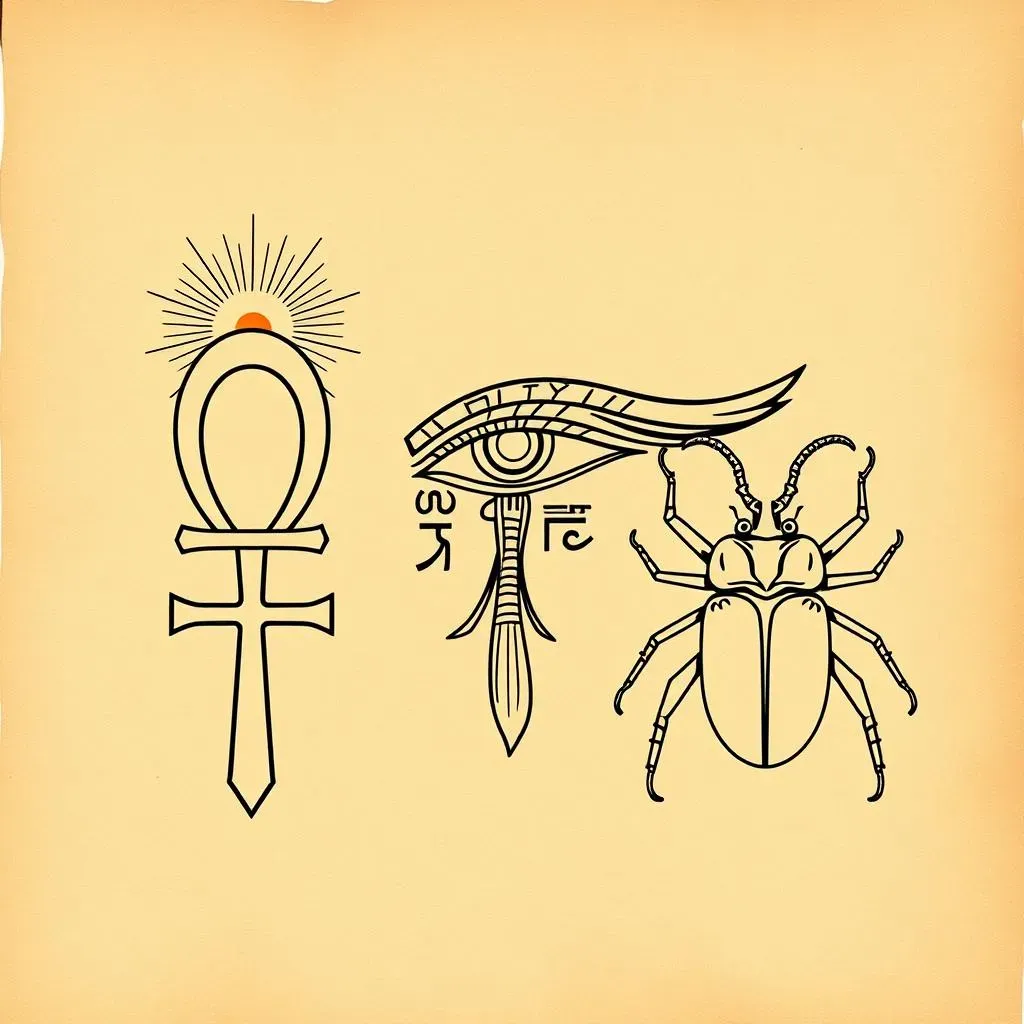
so you're curious about the symbolism behind Egyptian tattoos? That's where things get really interesting! Each symbol, deity, and hieroglyph carries a rich history and a specific meaning, offering a powerful way to communicate your beliefs and values through your ink. It's not just about choosing a cool design; it's about understanding the story behind it. Egyptian art was deeply intertwined with their religious beliefs, their understanding of the cosmos, and their hopes for the afterlife. When you choose an Egyptian tattoo, you're not just getting a pretty picture; you're tapping into that whole belief system.
For example, take the Ankh, that iconic cross with a loop at the top. It represents life itself, immortality, and the eternal soul. In tattoos, it can symbolize a desire for long life, a connection to the spiritual realm, or a celebration of the gift of life. Then there's the Eye of Horus, a powerful symbol of protection, healing, and royal power. It was believed to ward off evil and bring good fortune, making it a popular choice for those seeking guidance and protection in their lives.
Hieroglyphs, while visually stunning, also hold deep symbolic value. Each character represents a sound, a word, or an idea, allowing you to spell out names, quotes, or meaningful phrases in a visually striking way. Imagine getting a tattoo of your loved one's name written in hieroglyphs – it's a unique and personal way to honor them and connect with ancient Egyptian culture.
Symbol | Meaning | Possible Tattoo Interpretation |
|---|---|---|
Ankh | Life, Immortality | Desire for long life, connection to spirituality |
Eye of Horus | Protection, Healing | Seeking guidance, warding off evil |
Scarab Beetle | Transformation, Renewal | Overcoming challenges, embracing change |
Popular Egyptian Tattoo Designs: Gods, Hieroglyphs, and More
Popular Egyptian Tattoo Designs: Gods, Hieroglyphs, and More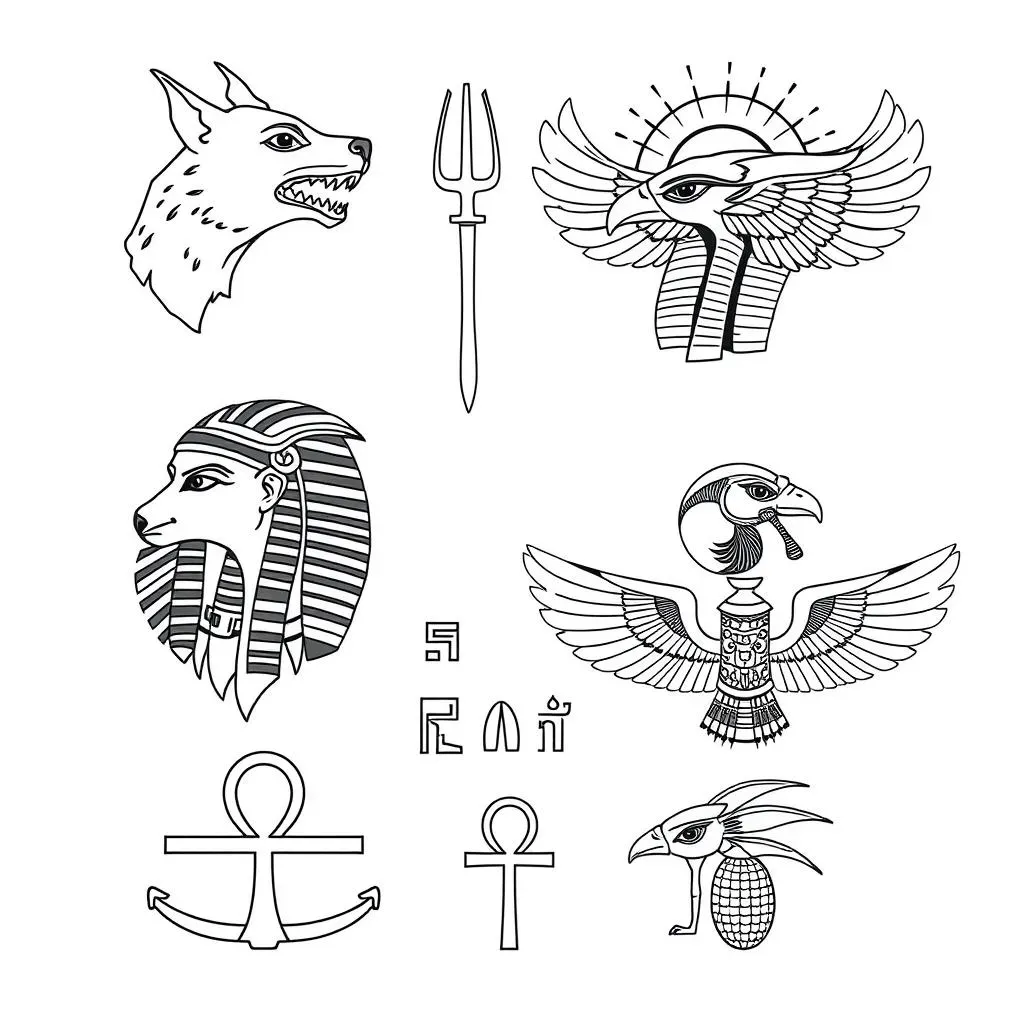
Deities of the Nile: Gods and Goddesses in Ink
Let's talk about the big players in Egyptian mythology – the gods and goddesses! These figures are super popular choices for tattoos, and for good reason. They represent different aspects of life, death, and the cosmos, and their images are often striking and powerful. Anubis, the jackal-headed god of embalming and the afterlife, is a classic choice. He's often depicted guiding souls to the underworld, making him a symbol of transition and transformation. Then there's Ra, the sun god, who represents light, creation, and the cycle of life. A tattoo of Ra can symbolize energy, vitality, and the power of the sun.
Isis, the goddess of magic, motherhood, and protection, is another favorite. She's often depicted with wings, symbolizing her ability to protect and nurture her followers. A tattoo of Isis can represent feminine power, healing, and the strength of family bonds. And let's not forget Thoth, the god of wisdom, writing, and knowledge. He's often depicted with the head of an ibis, a bird known for its intelligence. A tattoo of Thoth can symbolize a love of learning, a thirst for knowledge, and a connection to the intellectual realm.
Unlocking the Secrets: Hieroglyphs and Symbolic Script
So, hieroglyphs are more than just cool-looking symbols; they're a whole writing system! Each character represents a sound, a word, or an idea, and they were used to record everything from historical events to religious beliefs. Getting a tattoo of hieroglyphs is like carrying a piece of ancient Egyptian history with you. You could choose to spell out your name, a meaningful quote, or a word that resonates with you on a personal level. The possibilities are endless!
But before you rush off to get a hieroglyphic tattoo, do your research! Make sure you're getting the correct symbols and that they're arranged in the right order. A mistake could change the meaning of your tattoo completely. There are plenty of online resources and books that can help you translate hieroglyphs accurately. You could also consult with a knowledgeable tattoo artist who specializes in Egyptian designs. Trust me, it's worth the extra effort to get it right!
Placement Ideas for Your Egyptian Tattoo
Placement Ideas for Your Egyptian Tattoo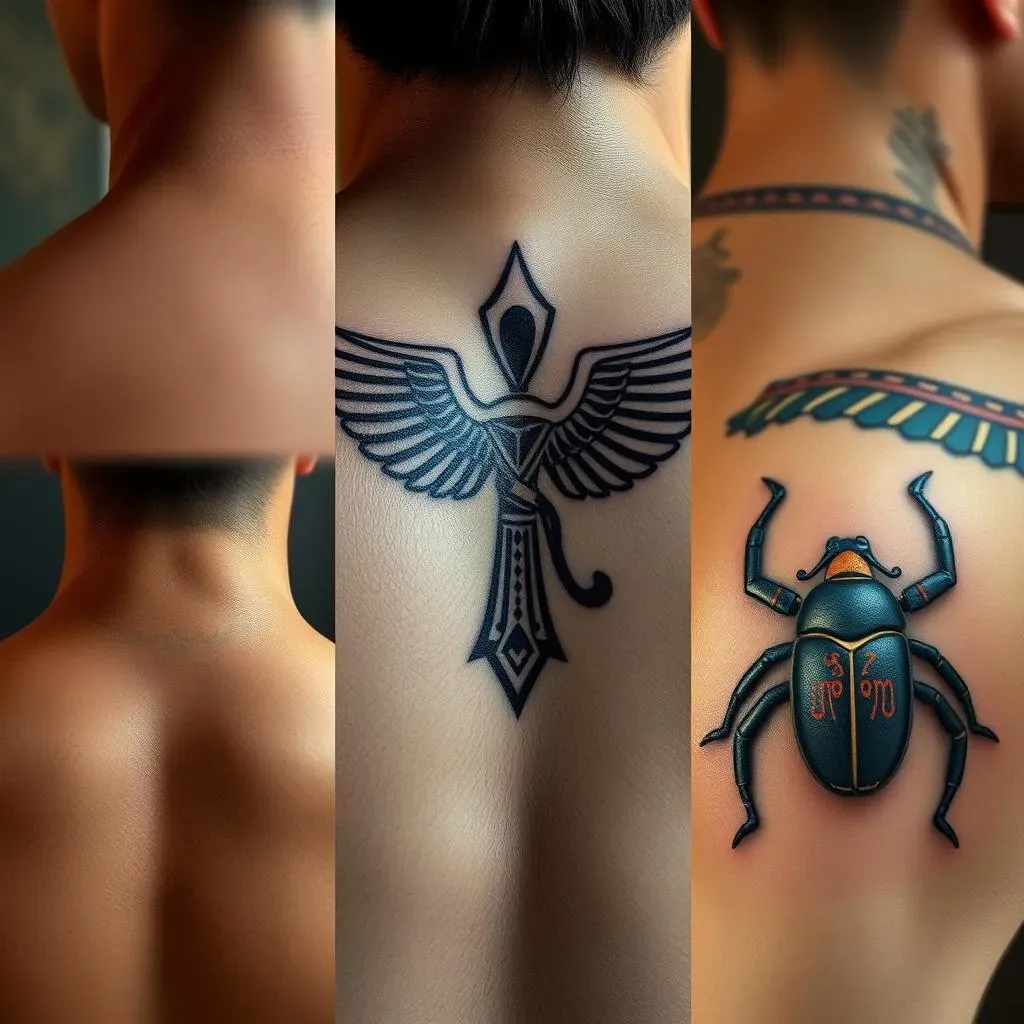
Showcasing Your Ink: Top Spots for Egyptian Designs
Alright, so you've got your design picked out – awesome! Now comes the fun part: deciding where to put it. Placement can make or break a tattoo, and with Egyptian designs, it's all about finding a spot that complements the artwork and showcases it in the best possible way. Think about the size and shape of your tattoo, as well as the symbolism behind it. Do you want it to be a bold statement piece or a subtle nod to your love of ancient Egypt?
For larger, more intricate designs like full-back pieces or sleeves, you'll want a canvas that offers plenty of space to capture all the details. The back, chest, and thighs are all great options for showcasing elaborate scenes or powerful depictions of gods and goddesses. Smaller, simpler designs like hieroglyphs or the Eye of Horus can be placed on the wrist, ankle, or behind the ear for a more subtle and personal touch. Ultimately, the best placement is the one that feels right for you and your tattoo.
Meaning and Location: Aligning Symbolism with Body Placement
Beyond aesthetics, consider the symbolism of your tattoo when choosing its placement. Some symbols are traditionally associated with certain parts of the body, and aligning your tattoo with that symbolism can add an extra layer of meaning. For example, the Eye of Horus, a symbol of protection and healing, is often placed on the back of the neck or shoulder to ward off evil and bring good fortune. The Ankh, representing life and immortality, can be placed on the chest or heart to symbolize a connection to the spiritual realm.
Ultimately, the decision is yours, but taking the time to consider the symbolism and cultural significance of your tattoo can make it even more meaningful and personal. And hey, if you're not sure where to start, don't be afraid to ask your tattoo artist for advice! They've likely seen hundreds of Egyptian tattoos and can offer valuable insights on placement and design.
Symbol | Recommended Placement | Reasoning |
|---|---|---|
Eye of Horus | Back of Neck, Shoulder | Protection from evil, guidance |
Ankh | Chest, Wrist | Connection to life and spirituality |
Scarab Beetle | Upper Arm, Back | Symbolizes transformation and rebirth |
Caring for Your Egyptian Tattoo: Ensuring Longevity
Caring for Your Egyptian Tattoo: Ensuring Longevity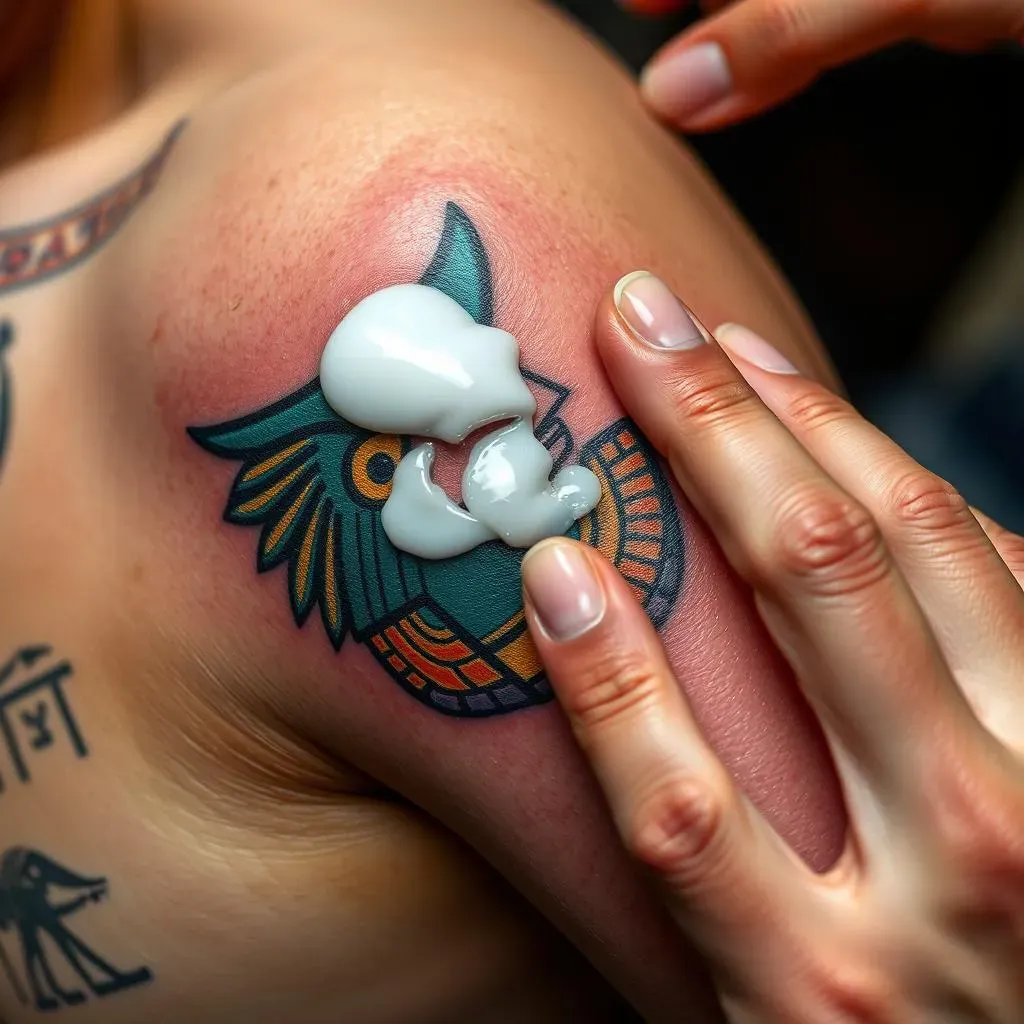
The Immediate Aftercare Ritual
so you've just gotten your amazing Egyptian tattoo – congrats! But the journey doesn't end there. Proper aftercare is crucial to ensure your ink heals beautifully and stays vibrant for years to come. Think of it as protecting a priceless work of art. The first few weeks are the most critical, so pay close attention to your artist's instructions.
Generally, you'll want to keep the bandage on for the recommended time (usually a few hours to a day), then gently wash the tattoo with mild, fragrance-free soap and warm water. Pat it dry with a clean paper towel and apply a thin layer of unscented lotion or tattoo balm. Avoid using petroleum-based products like Vaseline, as they can clog the pores and hinder healing. Repeat this process 2-3 times a day, keeping the tattoo clean and moisturized.
Long-Term Maintenance: Protecting Your Investment
Once your tattoo is fully healed, it's time to think about long-term maintenance. Sun exposure is the enemy of tattoos, causing them to fade and lose their vibrancy over time. Always apply a high-SPF sunscreen to your tattoo whenever you're going to be in the sun, even on cloudy days. And avoid tanning beds altogether – they're terrible for your skin and your ink!
Moisturizing is also key to keeping your tattoo looking its best. Dry skin can make the ink appear dull and faded, so make it a habit to moisturize your tattoo daily, especially after showering. Choose a lotion that's specifically designed for tattoos or a fragrance-free, hypoallergenic moisturizer. And finally, stay hydrated! Drinking plenty of water will help keep your skin healthy and supple, which will in turn keep your tattoo looking vibrant.
Do's and Don'ts for Tattoo Aftercare
- Do: Keep your tattoo clean and moisturized.
- Do: Protect your tattoo from the sun.
- Do: Drink plenty of water.
- Don't: Pick or scratch your tattoo.
- Don't: Use harsh soaps or lotions.
- Don't: Expose your tattoo to excessive sun or tanning beds.
Embrace the Legacy: Your Egyptian Tattoo Journey
From the mighty gods to the sacred symbols, Egyptian tattoo designs offer a powerful way to carry a piece of history and artistry on your skin. Hopefully, this guide has sparked your imagination and provided you with the knowledge to choose a design that resonates with your personal story. Whether you opt for a bold Anubis or a delicate lotus flower, remember that your Egyptian tattoo is more than just ink; it's a testament to a civilization that continues to captivate and inspire. Wear it with pride, and let its timeless beauty tell your unique tale.